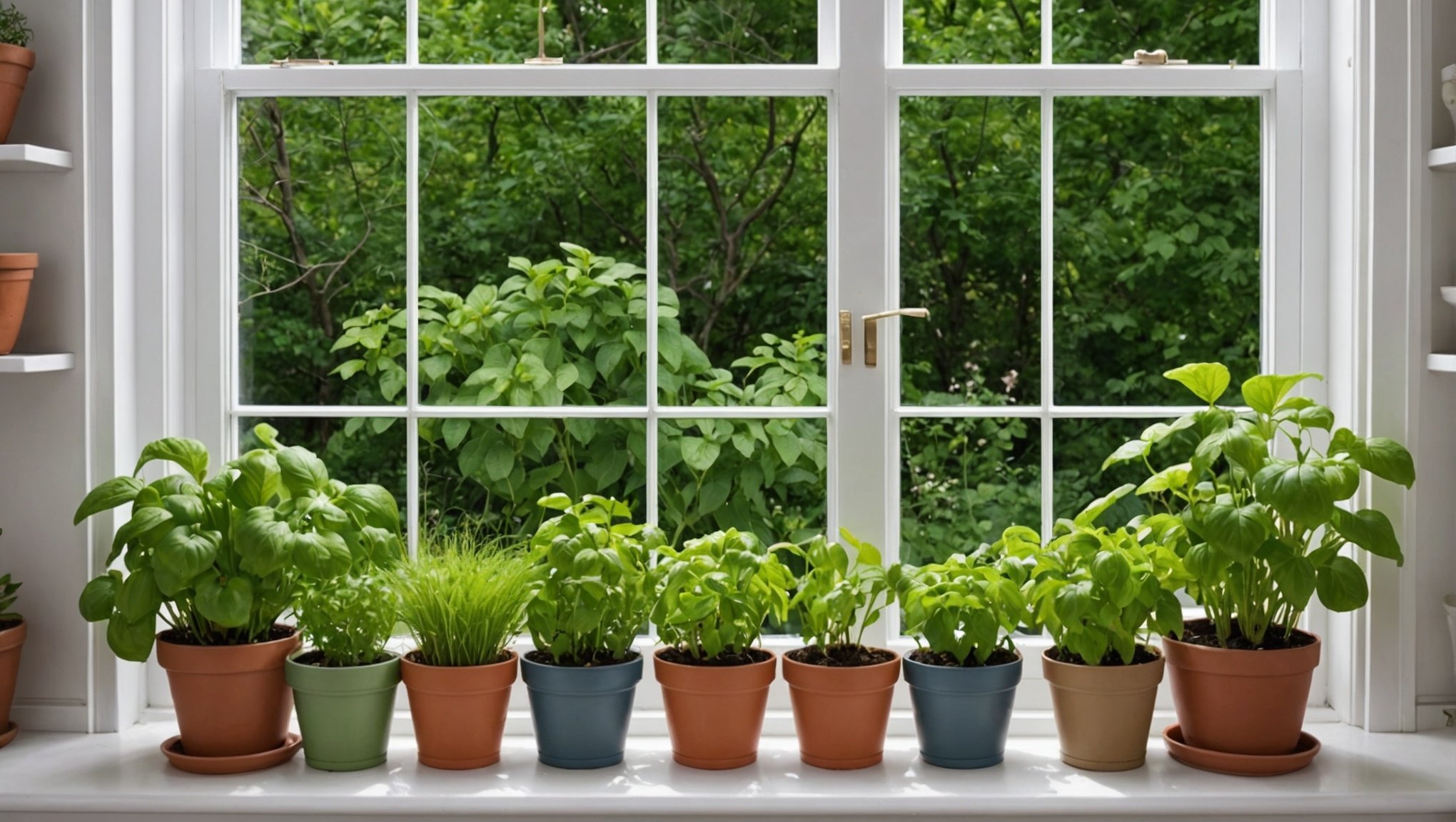Kitchen garden windows elevate cooking, transforming ordinary meals into gourmet experiences. Fresh herbs, vibrant vegetables, and fragrant flowers thrive right in your kitchen, ensuring convenience and enhancing flavors. Imagine snipping basil for pesto or harvesting tomatoes for a fresh salad, all from your own window. This article explores the many benefits a kitchen garden window brings, including improved taste, aesthetics, and access to fresh produce. Embrace the joy of gardening and boost your culinary creativity with this unique addition to your home. Discover how simple this transformation can be.
Benefits of Kitchen Garden Windows
Kitchen garden windows offer a plethora of benefits that can transform your culinary space. One of the primary advantages is the access to natural light. This is crucial for optimal plant growth, allowing herbs and small plants to thrive indoors. Natural light not only supports photosynthesis but also helps maintain a healthy indoor environment.
Also read : Transforming Your Kitchen: Seamless Integration into an Open Living Space for Stunning Harmony
Another significant benefit is the improvement in culinary experiences. With fresh herbs at your fingertips, you can enhance the flavour of your dishes effortlessly. Imagine the convenience of picking fresh basil or rosemary while cooking, adding an aromatic freshness that dried herbs simply cannot match.
Moreover, kitchen garden windows contribute to the enhanced aesthetic appeal of your home. They create a charming focal point, bringing the outside in and adding a touch of nature to your kitchen. The presence of greenery can uplift the ambiance, making your kitchen a more inviting and pleasant space.
In parallel : Designing a Multi-Cook Kitchen: Tips for Creating a Collaborative Cooking Space
Investing in a kitchen garden window not only boosts your home’s visual appeal but also offers practical advantages that enrich your daily cooking routine.
Practical Tips for Installing a Kitchen Garden Window
When considering a kitchen garden window installation, selecting the right location and size is paramount. Position your window where it will receive ample sunlight, ideally facing south or west. This ensures your plants get the light they need to flourish. The size should complement your kitchen layout without overpowering the space.
Before beginning the installation, gather essential materials and tools. You’ll need a window kit, level, measuring tape, screwdriver, and sealant. Having these on hand will streamline the process and prevent unnecessary delays.
For a successful installation, follow a step-by-step guide:
- Measure the space accurately to ensure a snug fit.
- Remove the existing window, taking care to avoid damage.
- Position the new garden window, using a level to confirm alignment.
- Secure the window in place with screws, ensuring stability.
- Apply sealant around the edges to prevent leaks and enhance insulation.
By adhering to these kitchen garden window installation tips, you can create a functional and aesthetically pleasing addition to your home, making it easier to enjoy fresh herbs and plants year-round.
Design Inspiration for Kitchen Garden Windows
Explore various kitchen garden window design ideas to transform your space into a vibrant and functional area. A well-designed window can seamlessly blend with your kitchen’s aesthetics while offering practical benefits.
Modern Styles and Aesthetics
Modern kitchen garden windows often feature clean lines and minimalistic frames, allowing maximum light and visibility. Opt for materials like aluminium or sleek wood finishes to complement contemporary interiors. These styles not only enhance the overall look but also support the growth of indoor plants by providing ample sunlight.
Incorporating Garden Windows into Existing Kitchens
Integrating a kitchen garden window into an existing setup can be straightforward. Consider the current colour scheme and materials to ensure a cohesive appearance. Choose a window style that aligns with your kitchen’s theme, whether it’s rustic, industrial, or modern. This approach maintains the kitchen’s harmony while adding a fresh, green touch.
Creative Layouts and Plant Arrangements
For a unique touch, experiment with creative plant arrangements. Use tiered shelving to maximise space and display a variety of herbs and small plants. Hanging planters can add dimension and interest. Consider mixing different plant types to create a visually appealing and functional garden window that serves both decorative and culinary purposes.
Maintenance of Kitchen Garden Windows
Proper kitchen garden window maintenance is crucial for ensuring a thriving indoor garden. Start by focusing on the regular care of your plants and soil. Consistently check the soil moisture levels and adjust watering routines accordingly. This prevents overwatering or drying out, which can harm plant health.
Cleaning the window structure itself is equally important. Dust and grime can accumulate, obstructing light and affecting plant growth. Use a gentle cleaning solution to wipe down the glass and frame, ensuring maximum sunlight exposure and a clear view.
Seasonal adjustments are necessary to accommodate changing light conditions. Rotate plants to ensure they all receive adequate sunlight. Consider introducing new plant varieties that thrive in different seasons to keep your garden window vibrant year-round.
Implementing these maintenance practices will not only preserve the functionality of your kitchen garden window but also enhance its aesthetic appeal. By dedicating time to kitchen garden window maintenance, you ensure a healthy environment for your plants and a beautiful, functional addition to your kitchen space.
Enhancing Flavor with Fresh Ingredients
Incorporating fresh herbs into your cooking can significantly elevate your dishes, offering both health and flavour benefits. Common kitchen garden herbs like basil, rosemary, thyme, and mint are not only easy to grow but also versatile in their culinary uses. They can transform a simple meal into a gourmet experience with their aromatic qualities and vibrant flavours.
Culinary Uses of Common Kitchen Garden Herbs
Fresh herbs can be used in a variety of ways. Basil is perfect for pesto or as a topping for pizzas and pastas. Rosemary pairs beautifully with roasted meats and vegetables, adding a fragrant, earthy note. Thyme, with its subtle lemony flavour, enhances soups and stews. Mint adds a refreshing twist to salads, desserts, and beverages.
Recipes that Highlight Fresh Ingredients
Recipes that focus on fresh ingredients allow these herbs to shine. A Caprese salad with fresh basil, tomatoes, and mozzarella showcases the herb’s sweet aroma. Rosemary-infused olive oil can be drizzled over roasted potatoes for a simple yet flavourful side dish.
Impact on Flavor Profiles
Home-grown produce offers a depth of flavour that store-bought items often lack. The freshness of these herbs can enhance flavour profiles, making your meals not only tastier but also more aromatic and appealing.
Addressing Potential Challenges
When installing a kitchen garden window, several challenges may arise. Understanding these can help in maintaining a thriving indoor garden.
Dealing with Pests and Diseases
Pests and diseases can be a significant concern. Regularly inspect plants for signs of infestation, such as discoloured leaves or unusual spots. Use natural remedies, like neem oil, to combat these issues without harming your plants or indoor environment.
Managing Humidity and Temperature
Humidity and temperature control are crucial for plant health. Kitchen environments can fluctuate, especially during cooking. Use a small fan or dehumidifier to maintain stable conditions, ensuring your plants do not suffer from excess moisture or heat.
Overcoming Space Limitations in Small Kitchens
Space can be a constraint in smaller kitchens. Opt for compact, vertical gardening solutions to maximise the area available. Tiered shelves or hanging planters can help utilise vertical space effectively, allowing you to grow a variety of herbs without overcrowding your kitchen.
By addressing these kitchen garden window challenges, you can create a sustainable and productive indoor garden, enhancing both your culinary experiences and your living space.
Visual Examples of Kitchen Garden Windows
Explore some kitchen garden window inspiration to ignite your creativity and transform your culinary space. These visual examples showcase beautiful installations that highlight the potential of these unique windows.
Showcase of Beautiful Installations
Imagine a kitchen garden window with cascading herbs and vibrant flowers. The use of sleek, minimalistic frames enhances the overall aesthetic, while allowing ample sunlight to filter through. Such installations not only provide functionality but also elevate the kitchen’s design.
Before and After Transformations
Witness the dramatic impact of a kitchen garden window through before and after transformations. A once plain wall can become a lush, green focal point, breathing life and freshness into the kitchen. These transformations demonstrate the window’s ability to change the entire ambiance of a space.
User-Submitted Photos and Stories
Real-life examples from users provide authentic kitchen garden window inspiration. Photos capture diverse styles and arrangements, from rustic wooden frames to modern aluminium designs. Accompanying stories reveal personal experiences, showcasing how these windows have enhanced both the aesthetic and practical aspects of their kitchens.
Conclusion and Further Resources
Exploring kitchen garden window resources can significantly enhance your gardening journey. To expand your knowledge, consider investing in recommended books such as “The Indoor Kitchen Garden” by Elizabeth Millard, which provides comprehensive guidance on growing herbs indoors. Websites like Gardening Know How offer a wealth of information, from plant care tips to innovative gardening techniques.
Connecting with local gardening communities and support groups can also be invaluable. These groups often host workshops and offer advice tailored to your region’s climate and conditions. Engaging with fellow enthusiasts can provide practical insights and encouragement.
For those looking to further optimise their kitchen garden, additional tools and products are available. Consider investing in LED grow lights to supplement natural sunlight, especially during shorter winter days. Self-watering planters can help maintain consistent moisture levels, reducing the risk of over or under-watering your plants.
By utilising these kitchen garden window resources, you can cultivate a thriving indoor garden, enhancing both your culinary experiences and your home’s aesthetic appeal.












